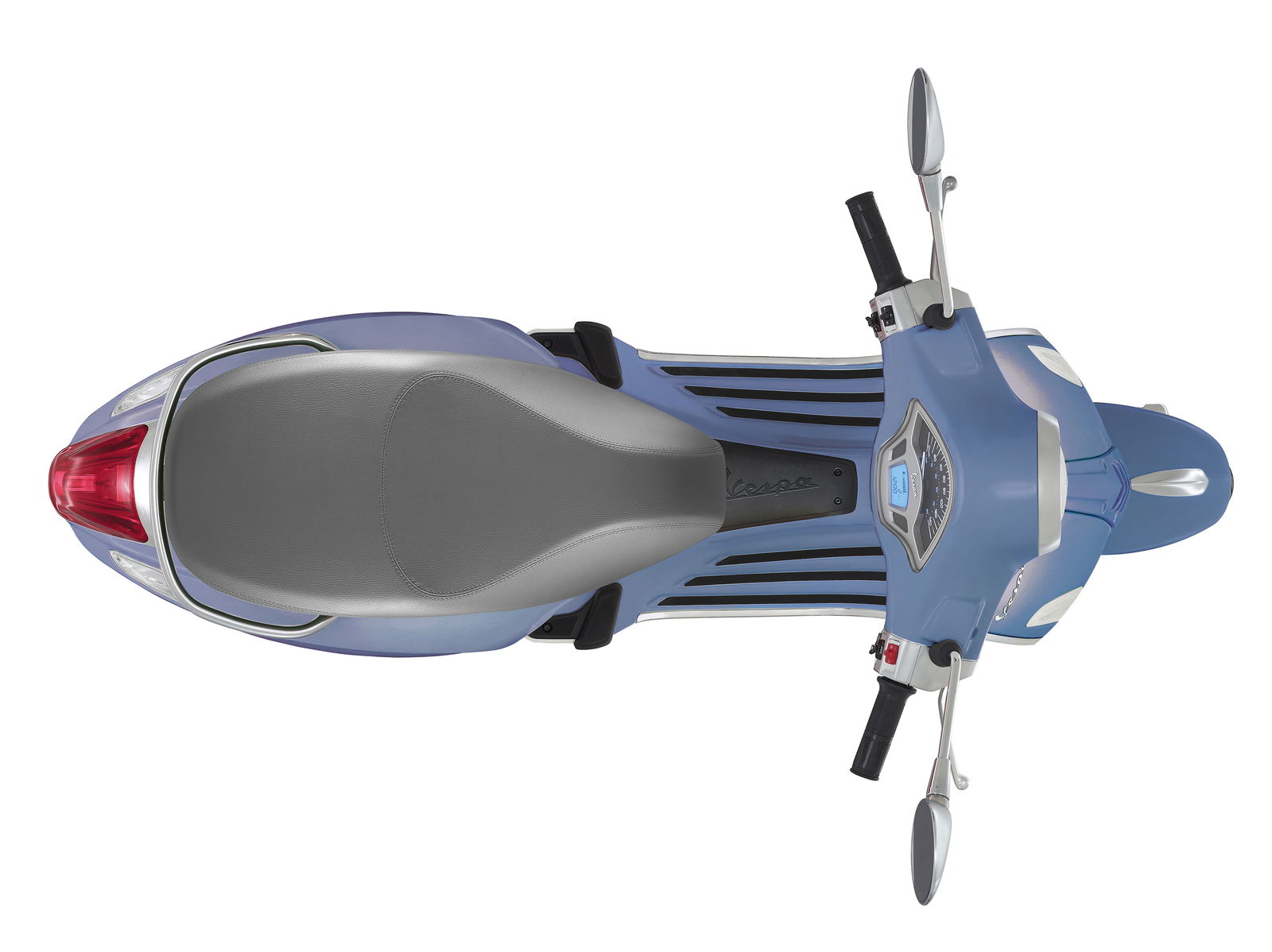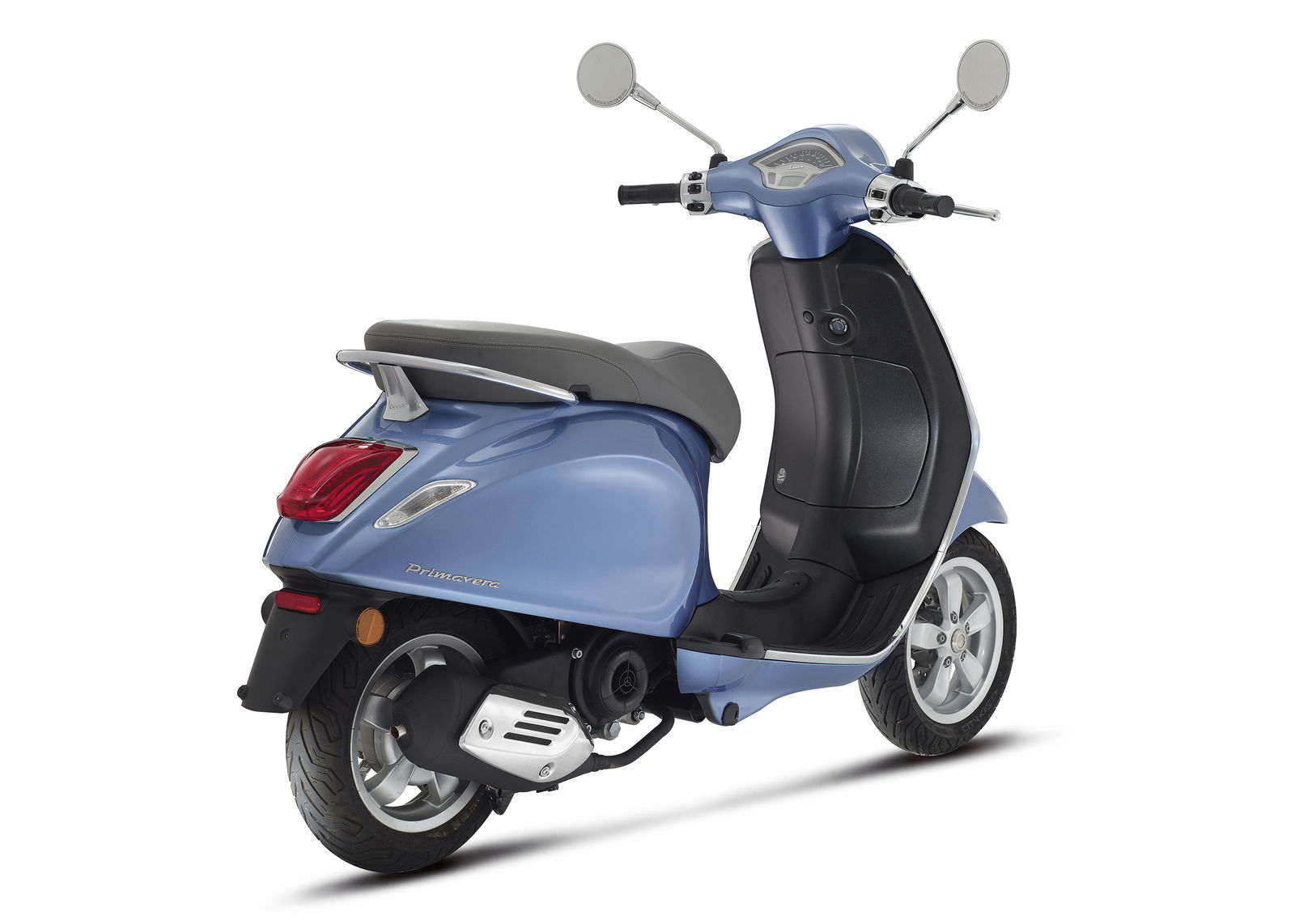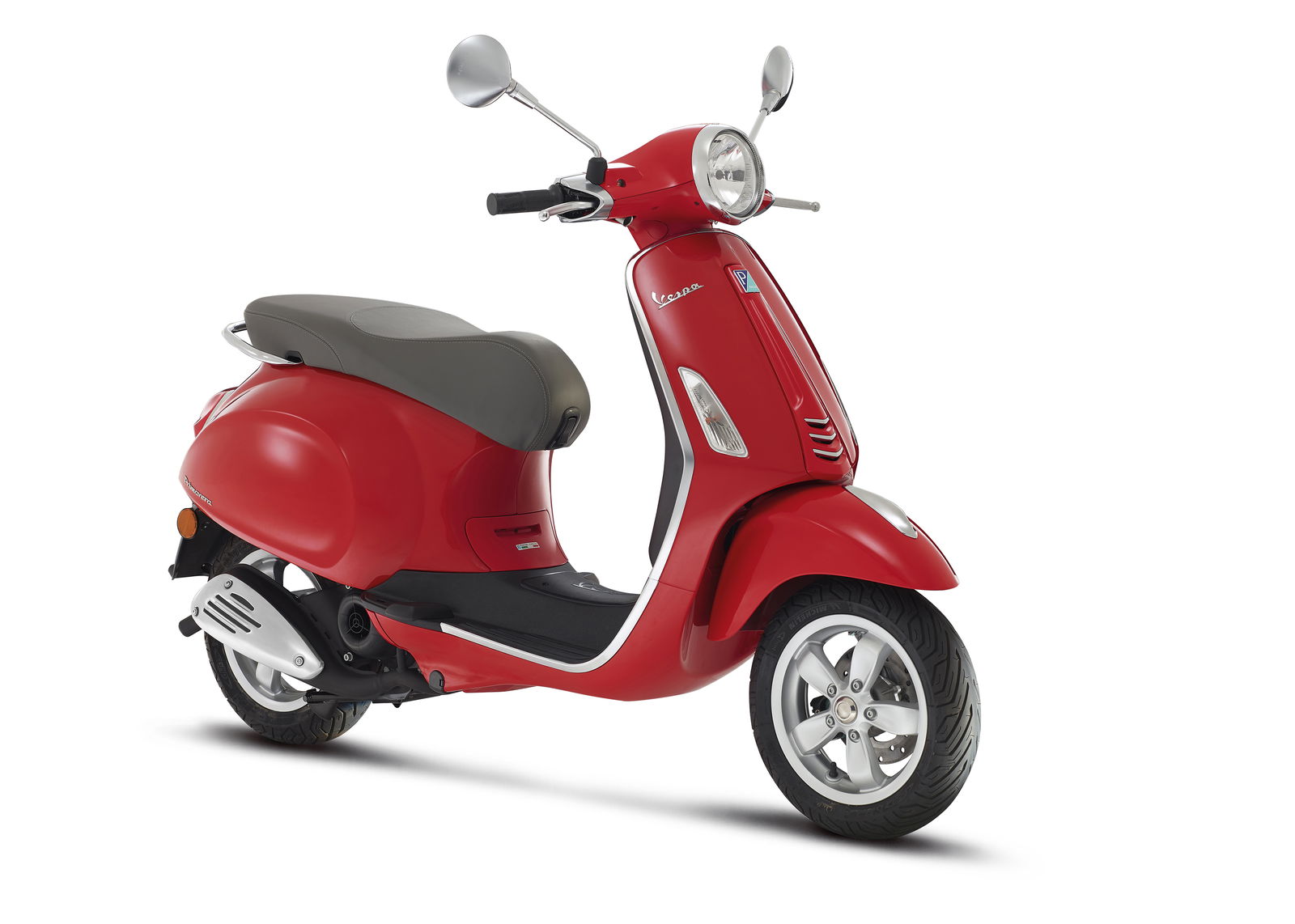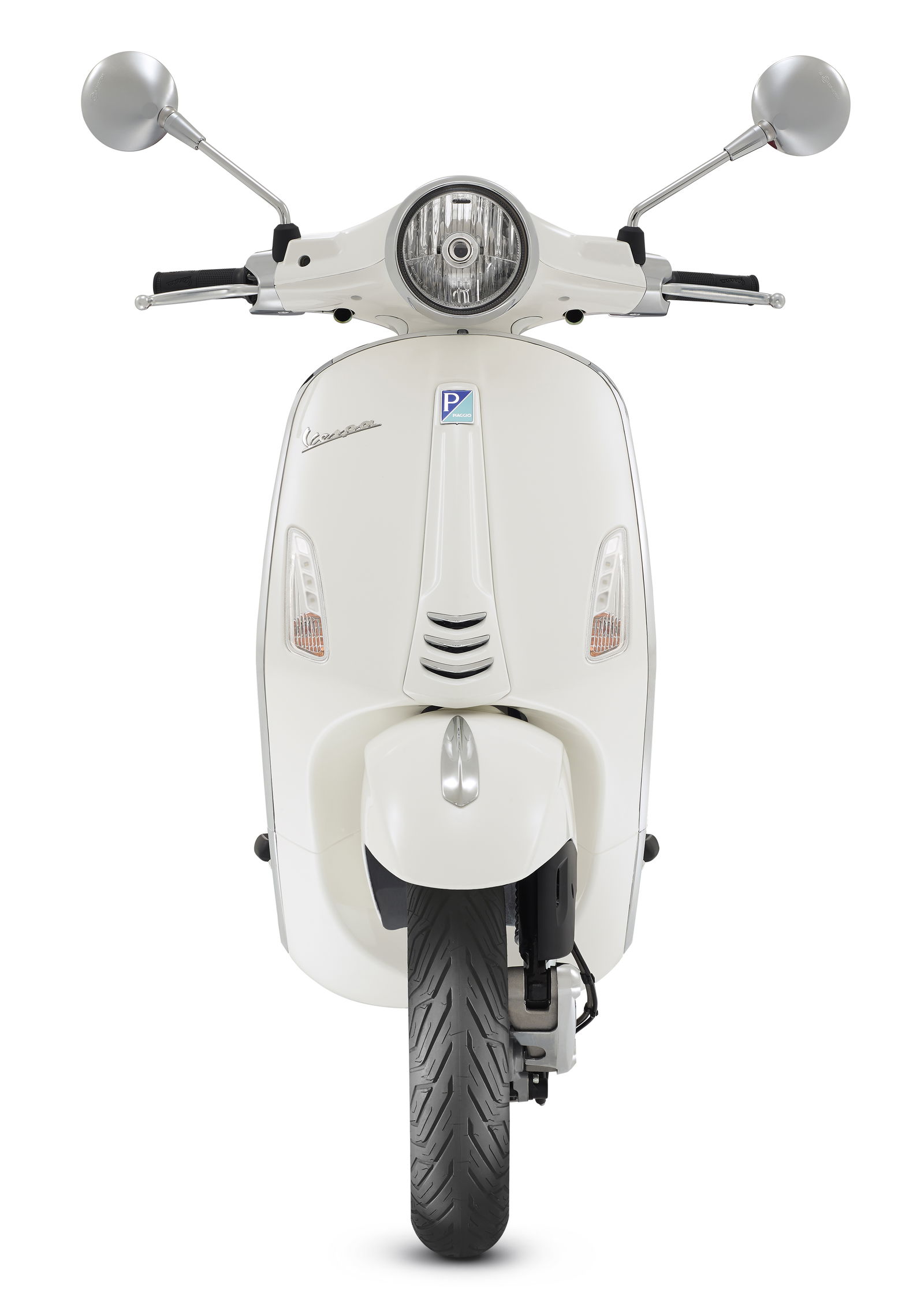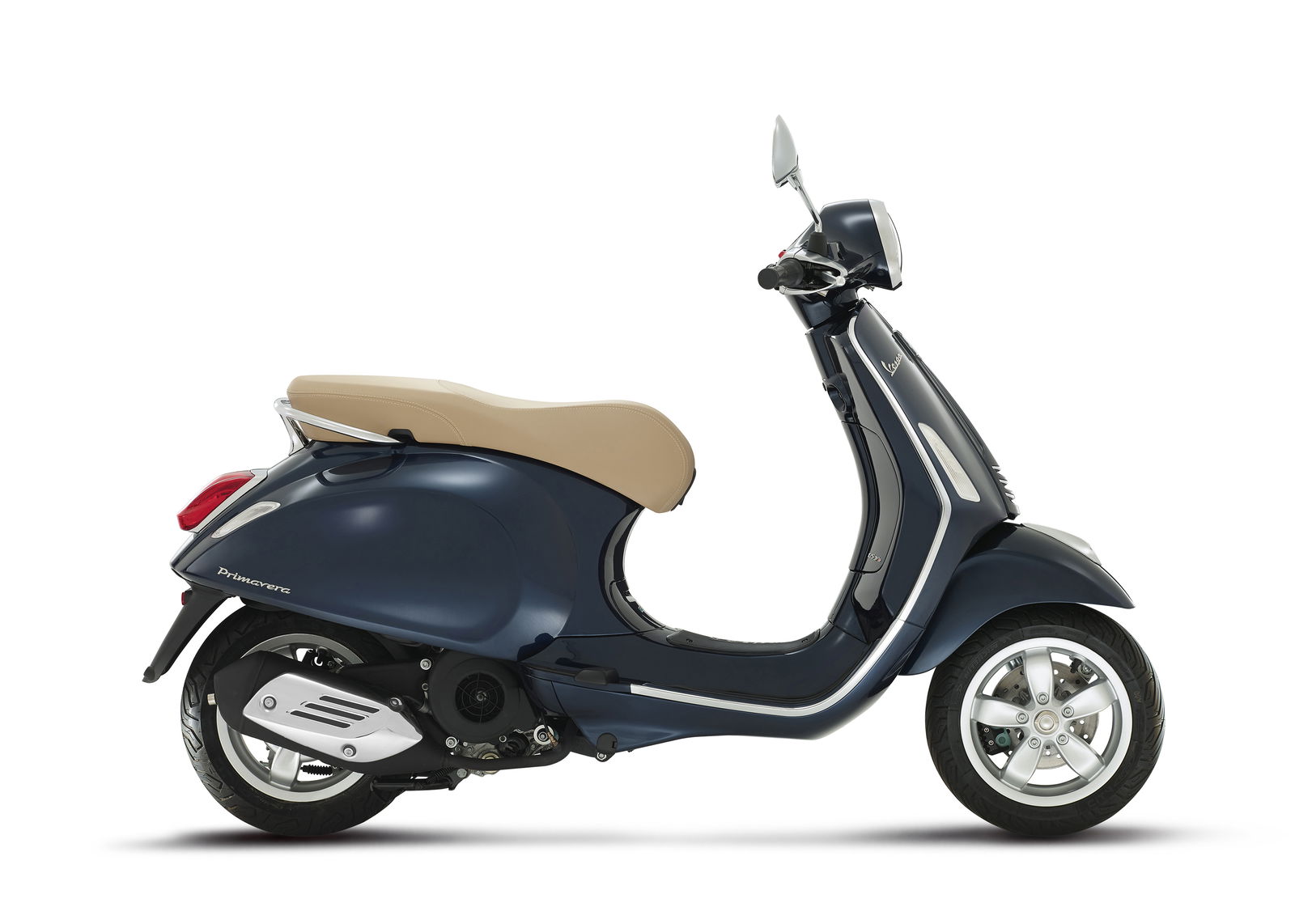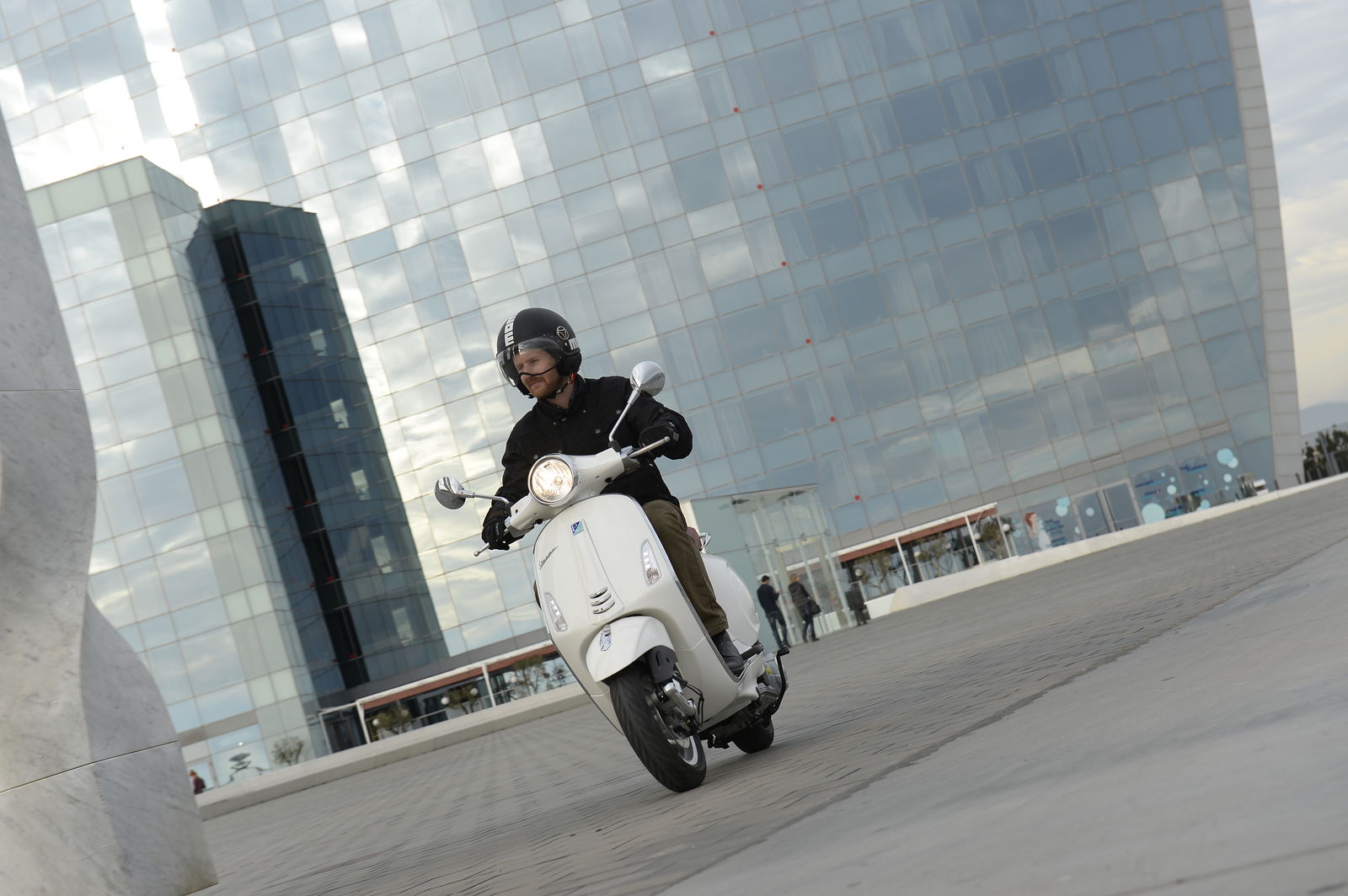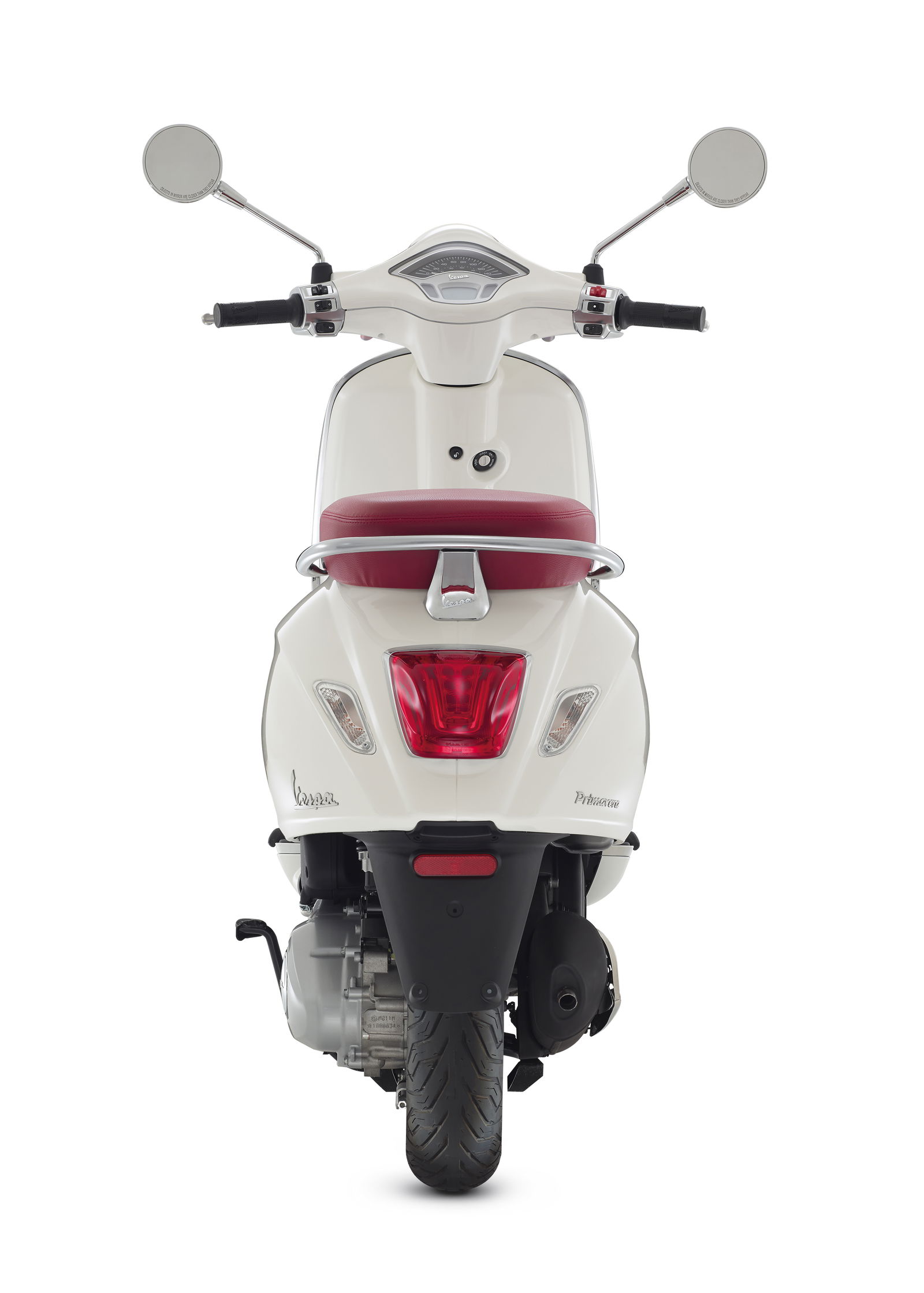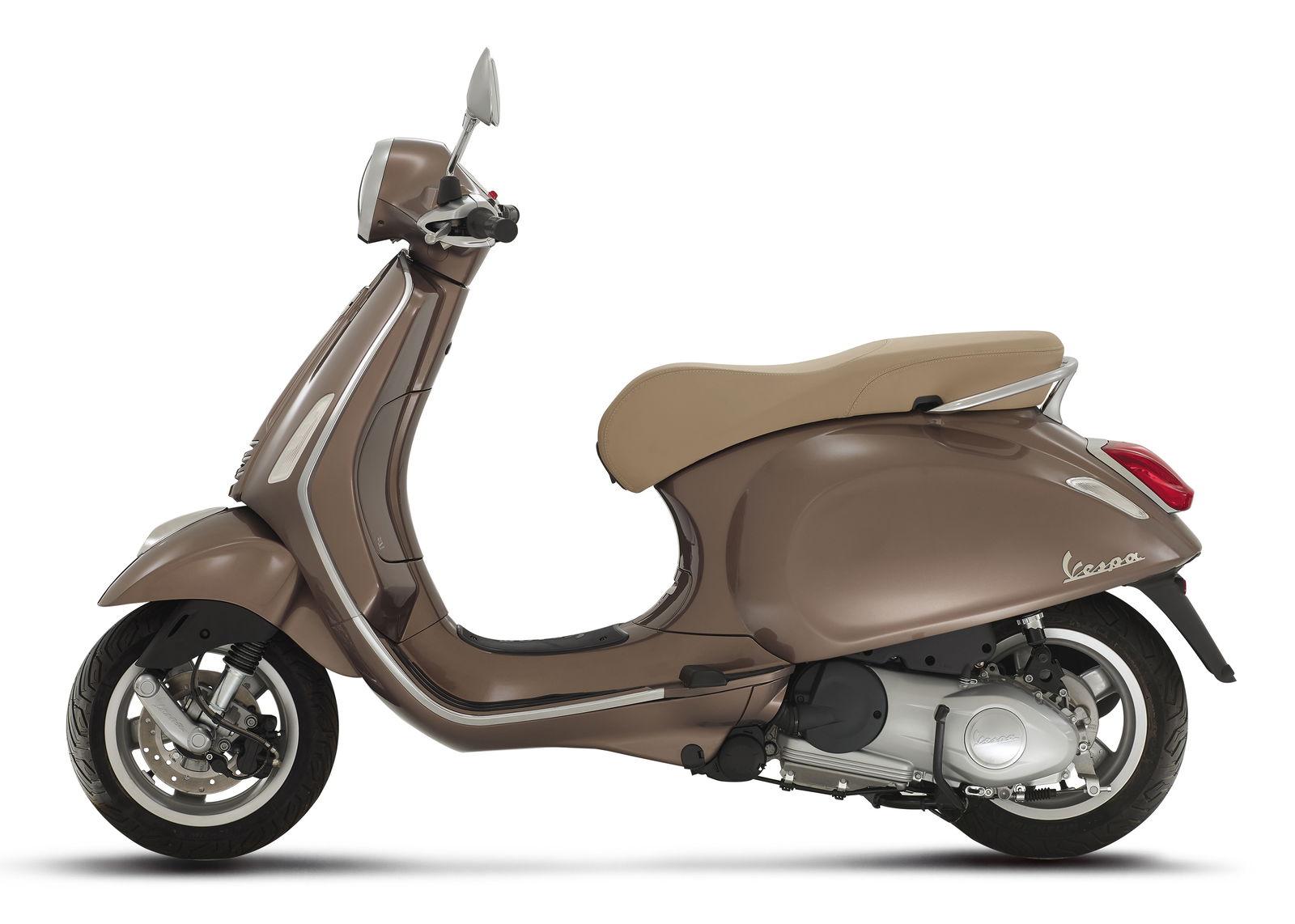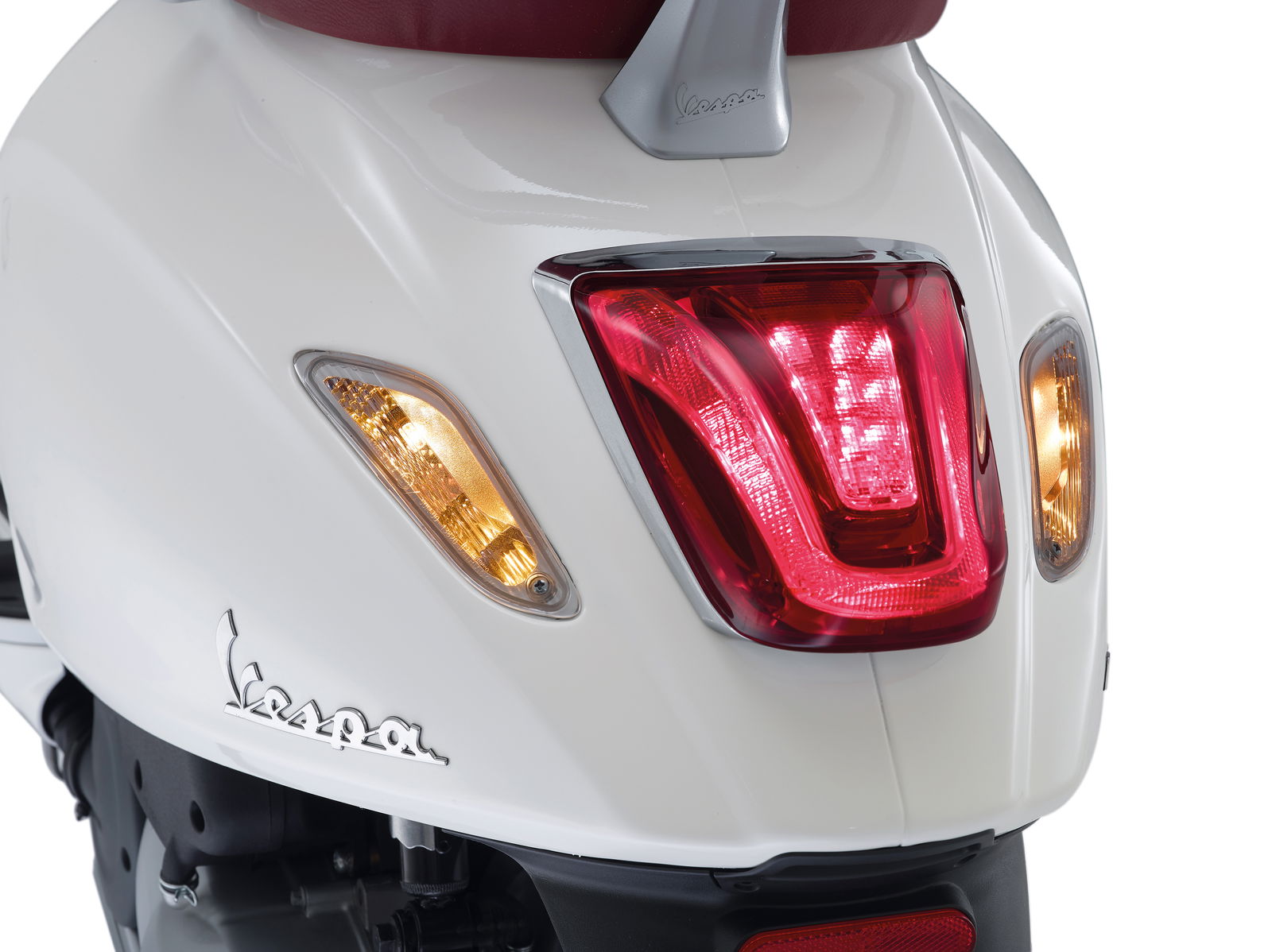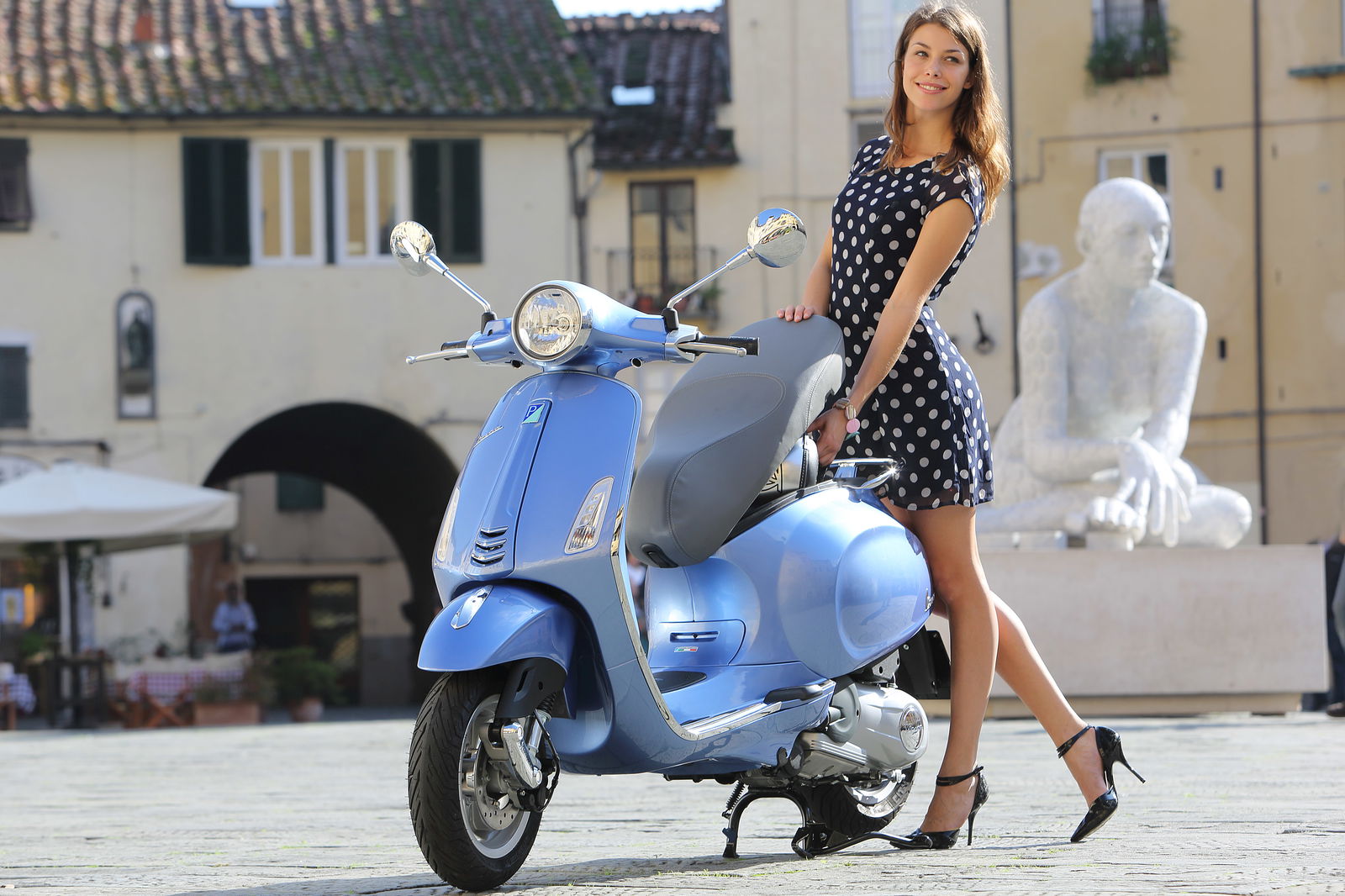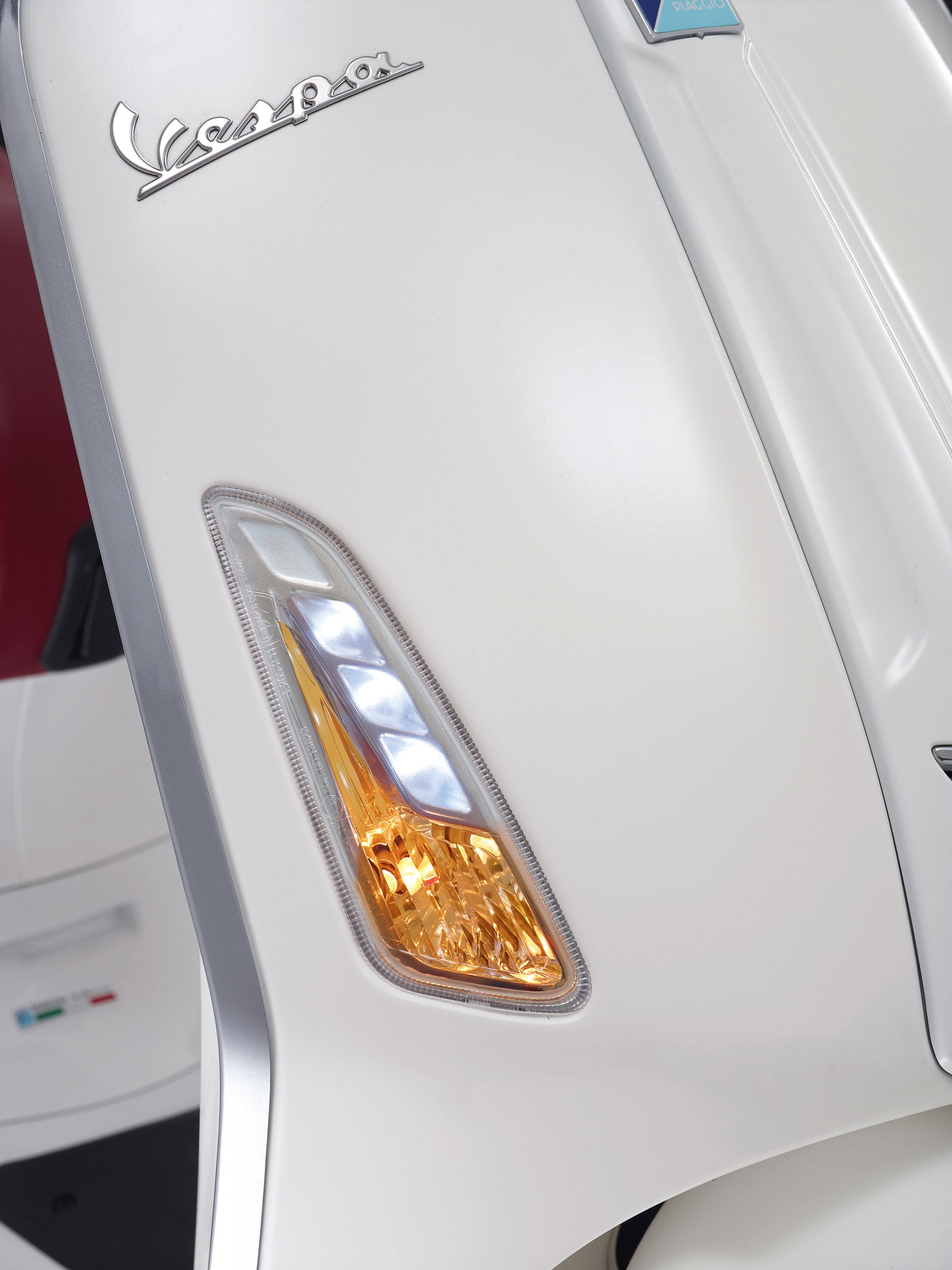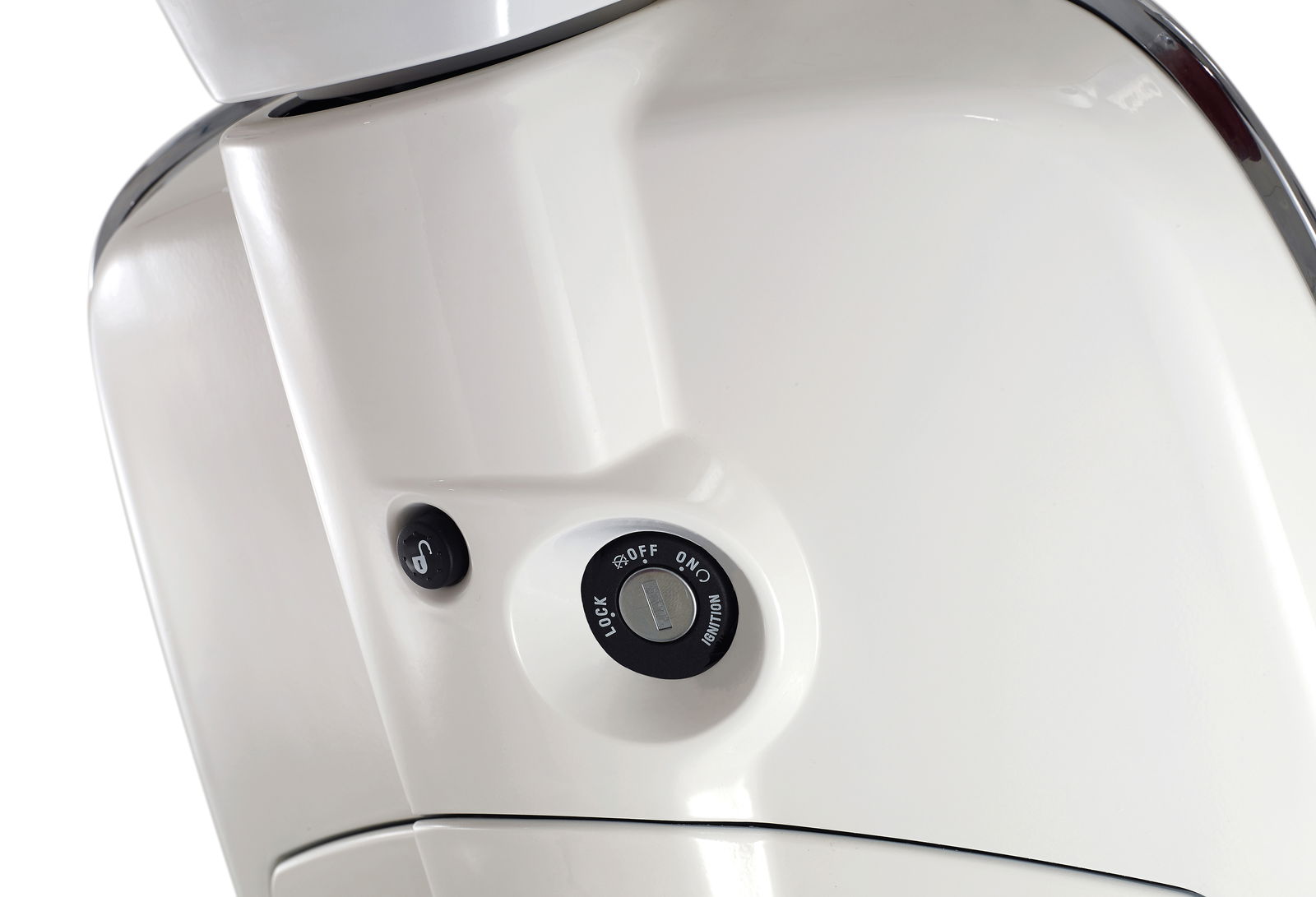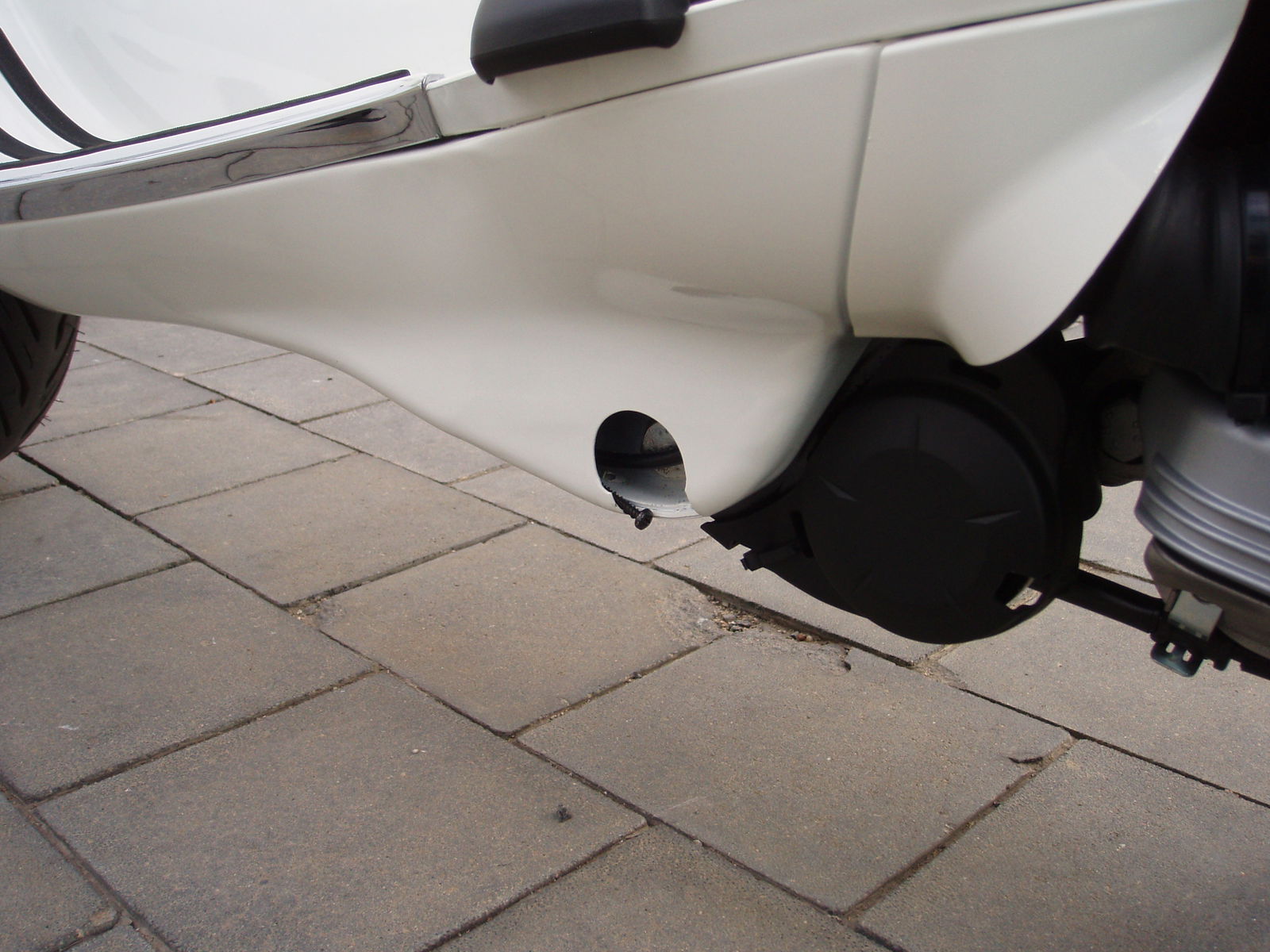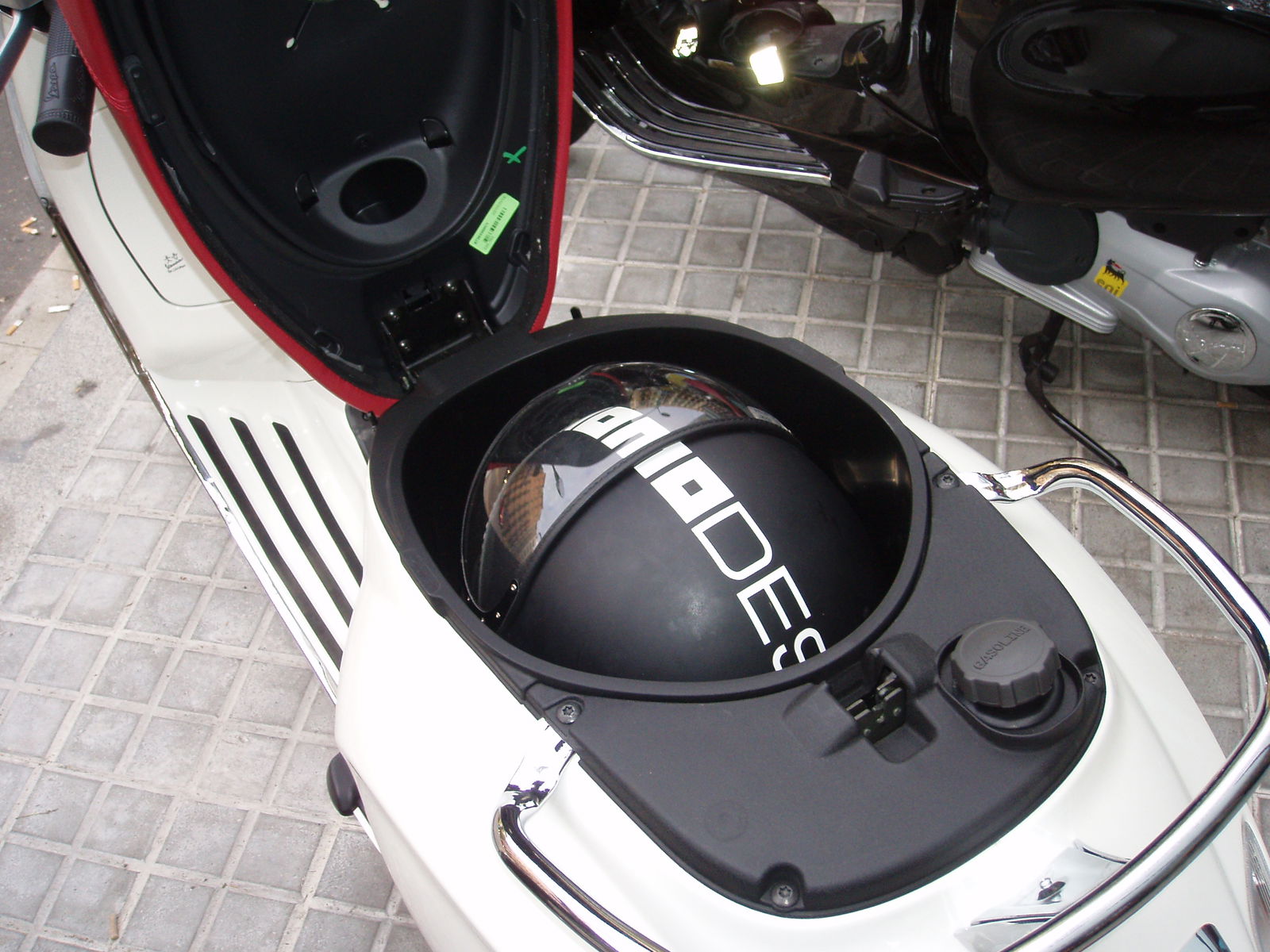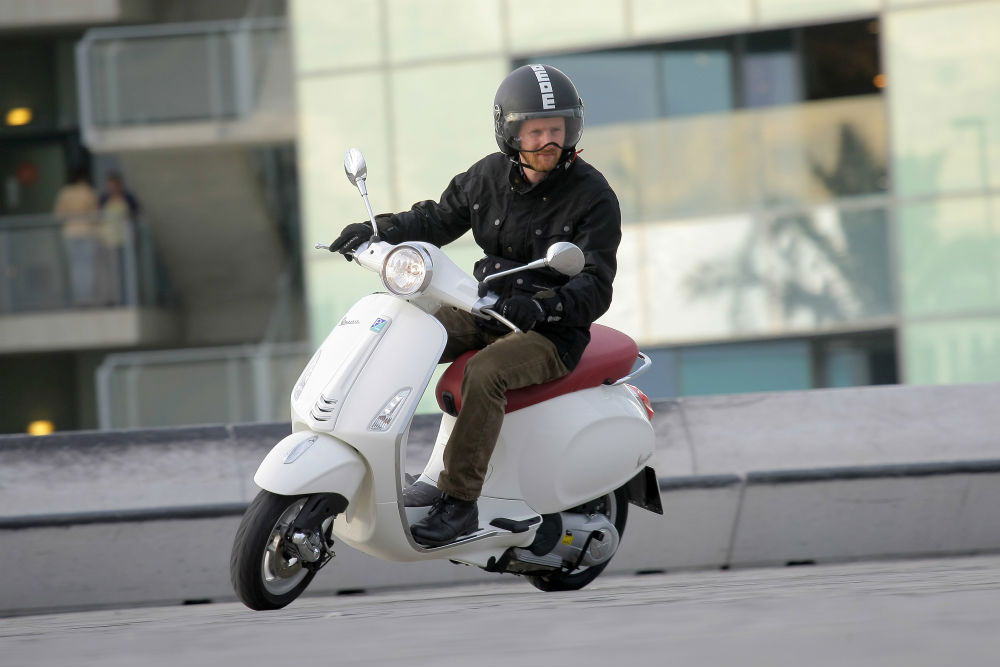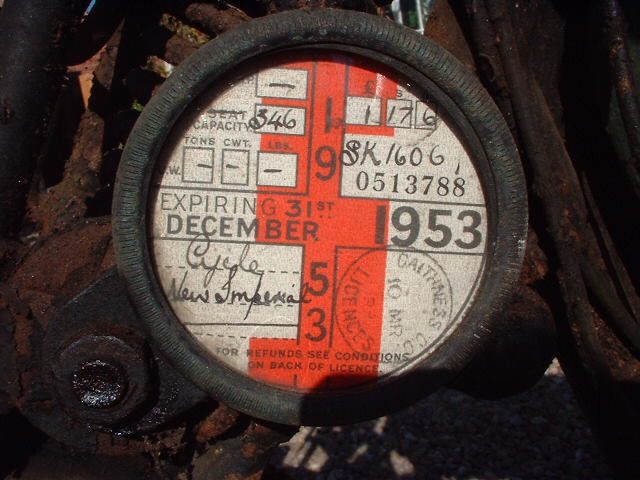First ride: Vespa Primavera review
Admit it – we all appreciate a stylish Vespa. Can the latest one uphold an icon?

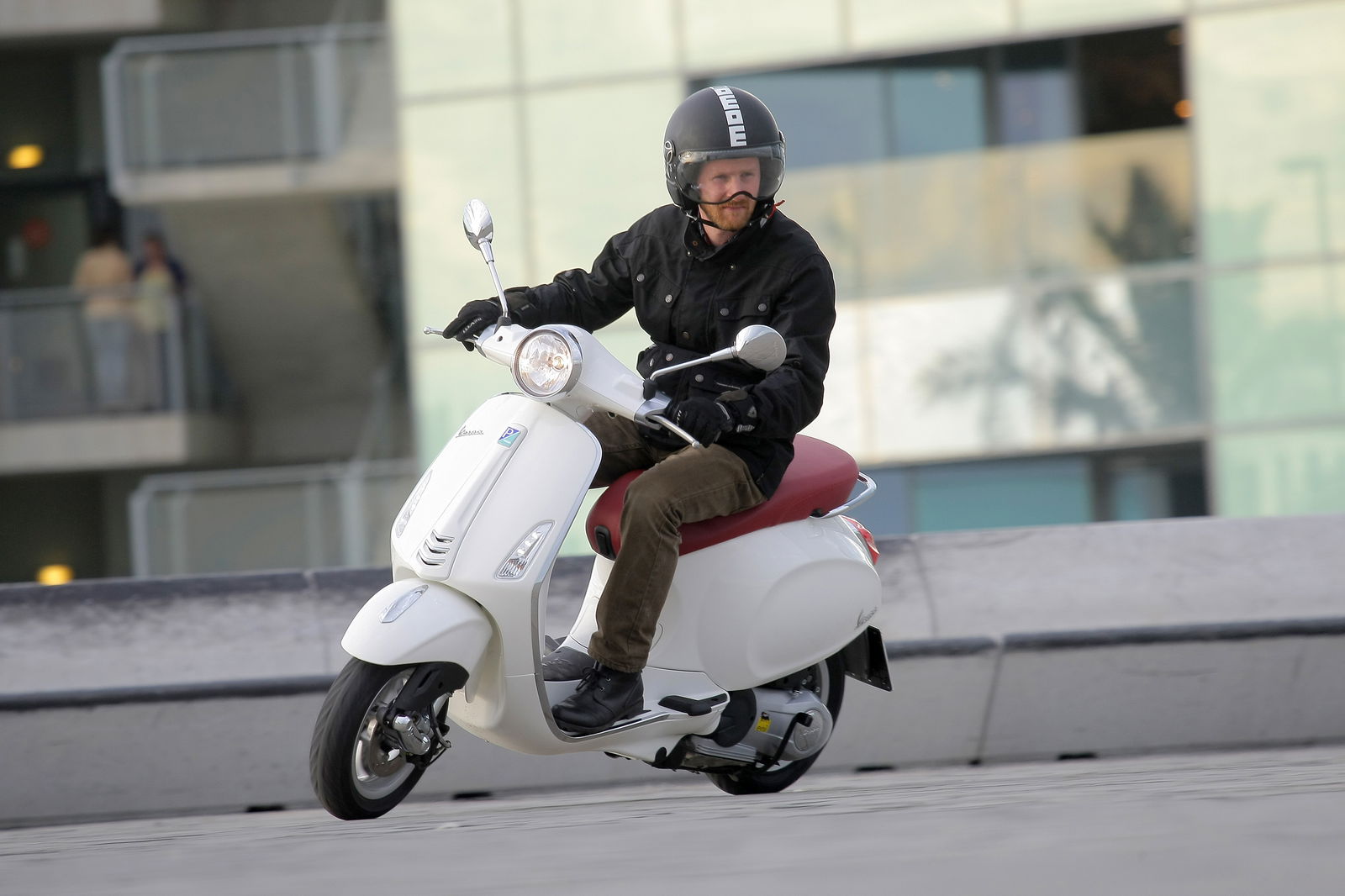
HERE'S a simple tip for finding something to agree with a disagreeable person on. The next time you see a Vespa, say to them: “That's a nice scooter.” Don't choose a beaten-up ET4, obviously. They'll think you’re a moron. Pick a smart PX or GTS and they will say: "Yes, it is. I agree with you." You're on your own after that. This isn't life coaching.
They will agree because no one in the world is immune to the charm of the historic Italian scooter marque. We may not all find them viable to own and use, but deep in our heart of hearts, we all like Vespas, with their cheery pastel colours and assorted feminine curves.
So the manufacturer doesn't have to move technological boundaries when it introduces a new one. It just has to make it a bit like the old one and tell people it's got the latest technology.
Welcome the new Vespa Primavera, replacing the Vespa LX. It's a 125 or 150cc four-stroke. You will note it looks a bit like other Vespas but with a few tasteful new features like the upswept rear-end and sculpted LED back light. In a presentation at the launch in Barcelona, journalists were told at length how its styling echoes that of the original Vespa Primavera, made in 1968. See the round headlight, and cake slice-shaped clocks, all in sympathy with its namesake. But the technology! Boy, the technology. There was nothing 1960s about that. It's the "latest" they said. Just look at the digital display in the clocks, with a fuel gauge.
Yes, let's look at that. If you want a scooter to look classic, wouldn't a fully analogue display be better? Isn't a digital one incongruous, like the square headlight they'd pointed out it didn't have? Was this really the latest technology, or was it cheaper than a fuel gauge with a needle?
Cable-operated drum brakes haven't been latest technology for about 1000 years, so the arrangement on the back wheel of the Primavera must be something so new I've never seen it before, which just happens to look like a drum. I tweeted a picture hoping someone could explain. Turns out it is a drum after all. An ABS version is on the way, Vespa said, although they didn't know when (not a particularly startling forecast when you think about it), and they will do it keeping the rear drum. Why?
Perhaps I'm being unfair. The drum is easily capable of locking the rear wheel, as journalists repeatedly and gratuitously established on the test-ride through Barcelona. It feels primitive after years of bikes with discs throughout. The lever doesn't have the same progressive feel and comes all the way to the bar, but the wheel locks long before it gets there. The fact is, this scooter probably doesn't need a rear disc. The market leader, Honda's PCX125, also has a rear drum.
The disc it does have is easily powerful enough to lock the front, and has all the feel you'd expect. It's actually very good.
One new feature the Vespa people seemed very proud of is the suspension, and there’s no reason they shouldn’t be. Where most pivot on one axis, the Primavera’s swing-arm, which is also the engine, has dual axes, or two pivot points. At the front end it keeps the usual Vespa single fork-arm but has a new hinged mounting system for the shock. The result, Vespa says, is a 40% reduction in acceleration forces through the seat. In other words, your behind is 40% less pounded.
I don’t know about that. I can say that the Primavera gives an exceptionally smooth ride for a scooter of this size. I used to own a Vespa PX200, one of the last with a drum front brake, and complimentary terrible front suspension. I would brace myself whenever I saw a bump in the road. Barcelona’s roads were surprisingly well-maintained compared to London’s, possibly because of the huge number of scooters, but the Primavera glided over what imperfections I could find, and I did end up seeking them out.
The seat is really thickly padded. Where it’s narrowest, at the front, it compensates by being thickest. So if you feel like a change after an hour with your bum in the middle of the seat, you can move it right to the front and still be comfortable. I rode for three hours, in the centre of Barcelona and on a busy, faster ring road, and got off feeling like I could do another three. I’m not sure when I last rode something I could say that about. I could sit on it all day.
The Primavera has the LX's air-cooled single-cylinder three-valve engine, with a new bore and stroke and friction-reducing crankshaft, which Vespa says improves fuel economy, torque and acceleration. On the 125 Primavera, in a not particularly scientific test, I counted six seconds between zero and 30mph. Another five seconds passed between 30 and 40mph and nine seconds between 40 and 50. So that’s 0-50mph in 20 seconds. I ran out of road before reaching 60mph. If you’re used to a motorcycle, it feels like you have to make an appointment to overtake, even from 30mph, but the Primavera seemed as fast as all the other 125 scooters away from the lights.
And it keeps gaining speed, slowly. From riding it in town, I’d guessed the top speed would be about an indicate 65mph but saw 70mph on the ring road. I think it would have climbed higher with fewer cars in the way.
The 125 makes a quoted 10.7hp and will do up to a claimed 180mpg. The 150cc version makes 12.9hp, and was noticeably faster off the mark, but overtaking still feels like an eternal process if you’re accustomed to something bigger.
Both felt stable at all speeds. Once or twice the rear tyre felt like it moved sideways a fraction, perhaps on a slightly slippery piece of road, even though the power is only in double figures and I wasn’t exactly scraping the footboards. I don’t know if it’s the new dual-axis rear suspension, or having the engine as the swing-arm, but it’s all a bit vague back there.
On a scooter like this I’m not sure that matters though. People don’t buy them to get their knee down. The Primavera’s specialism is short trips across town, and looking good while it makes them. As you’d expect from a small scooter, it’s superb at finding ways through stationary traffic. This is one of the things I really enjoy doing on a motorcycle. It’s a matter of public record that I’m not very good on a trials bike. Nevertheless, in my over-active imagination, weaving through thick stop-start traffic becomes a kind of trials exercise, and I try not to put a foot down in the brief moments I have to stop. I get into a zone. A congestion zone.
The Primavera is as good at it as anything I’ve ridden. Vespa has given it narrower footboards than the LX, so when I realise I’m not Dougie Lampkin, and this isn’t a trials bike, I can get a foot on the ground quickly.
Vespa said they were the only manufacturer “introducing an all-steel scooter in 2013". The Primavera retains the traditional Vespa steel monocoque chassis but there’s quite a lot of plastic where there wouldn’t be on more traditional models. The front mudguard, glove-box and inner footboards are all plastic, where you would find steel on a PX. I think Vespa has got the styling right, managing to make the Primavera look both traditional and new, but you can make your own mind up about that.
The handlebar switches look a little cheap but elsewhere build quality appears good. Everything does what it ought to. A button above the glove box raises the seat to reveal space for even a generously proportioned full-face helmet. Push the ignition key in and the glove box pops open, with plenty of space for, well, for gloves.
On either side of the chassis there’s a small plastic cap over a recess which houses an engine mounting bolt. I took one cap off and discovered an inch-long screw inside, just sitting there, loose. That’s one for Vespa to explain.
The Primavera 125 costs £3,299. The 150, which will be brought into the UK to order, is the same price. That’s £700 more than Honda’s PCX125 and £449 more than Honda’s PS125i, which is just as competent as the Vespa.
There’s a simple way to establish the difference. Try saying to a disagreeable person, “That’s a nice scooter” but pointing to a Honda instead of a Vespa. This time they won’t nod in agreement. Instead there will be a long, awkward silence, in which you'll feel like apologising. They might tell you to do one.
Model tested: Vespa Primavera 125/150
Price: £3,299
Power: 10.7hp/12.9hp
Fuel capacity: 8 litres
Seat height: 780mm
Colours: White, blue, red, brown, light blue and black
Contact: www.vespa-scooters.co.uk
Click here to read or add to Vespa LX 125 owners' reviews

HERE'S a simple tip for finding something to agree with a disagreeable person on. The next time you see a Vespa, say to them: “That's a nice scooter.” Don't choose a beaten-up ET4, obviously. They'll think you’re a moron. Pick a smart PX or GTS and they will say: "Yes, it is. I agree with you." You're on your own after that. This isn't life coaching.
They will agree because no one in the world is immune to the charm of the historic Italian scooter marque. We may not all find them viable to own and use, but deep in our heart of hearts, we all like Vespas, with their cheery pastel colours and assorted feminine curves.
So the manufacturer doesn't have to move technological boundaries when it introduces a new one. It just has to make it a bit like the old one and tell people it's got the latest technology.
Welcome the new Vespa Primavera, replacing the Vespa LX. It's a 125 or 150cc four-stroke. You will note it looks a bit like other Vespas but with a few tasteful new features like the upswept rear-end and sculpted LED back light. In a presentation at the launch in Barcelona, journalists were told at length how its styling echoes that of the original Vespa Primavera, made in 1968. See the round headlight, and cake slice-shaped clocks, all in sympathy with its namesake. But the technology! Boy, the technology. There was nothing 1960s about that. It's the "latest" they said. Just look at the digital display in the clocks, with a fuel gauge.
Yes, let's look at that. If you want a scooter to look classic, wouldn't a fully analogue display be better? Isn't a digital one incongruous, like the square headlight they'd pointed out it didn't have? Was this really the latest technology, or was it cheaper than a fuel gauge with a needle?
Cable-operated drum brakes haven't been latest technology for about 1000 years, so the arrangement on the back wheel of the Primavera must be something so new I've never seen it before, which just happens to look like a drum. I tweeted a picture hoping someone could explain. Turns out it is a drum after all. An ABS version is on the way, Vespa said, although they didn't know when (not a particularly startling forecast when you think about it), and they will do it keeping the rear drum. Why?
Perhaps I'm being unfair. The drum is easily capable of locking the rear wheel, as journalists repeatedly and gratuitously established on the test-ride through Barcelona. It feels primitive after years of bikes with discs throughout. The lever doesn't have the same progressive feel and comes all the way to the bar, but the wheel locks long before it gets there. The fact is, this scooter probably doesn't need a rear disc. The market leader, Honda's PCX125, also has a rear drum.
The disc it does have is easily powerful enough to lock the front, and has all the feel you'd expect. It's actually very good.
One new feature the Vespa people seemed very proud of is the suspension, and there’s no reason they shouldn’t be. Where most pivot on one axis, the Primavera’s swing-arm, which is also the engine, has dual axes, or two pivot points. At the front end it keeps the usual Vespa single fork-arm but has a new hinged mounting system for the shock. The result, Vespa says, is a 40% reduction in acceleration forces through the seat. In other words, your behind is 40% less pounded.
I don’t know about that. I can say that the Primavera gives an exceptionally smooth ride for a scooter of this size. I used to own a Vespa PX200, one of the last with a drum front brake, and complimentary terrible front suspension. I would brace myself whenever I saw a bump in the road. Barcelona’s roads were surprisingly well-maintained compared to London’s, possibly because of the huge number of scooters, but the Primavera glided over what imperfections I could find, and I did end up seeking them out.
The seat is really thickly padded. Where it’s narrowest, at the front, it compensates by being thickest. So if you feel like a change after an hour with your bum in the middle of the seat, you can move it right to the front and still be comfortable. I rode for three hours, in the centre of Barcelona and on a busy, faster ring road, and got off feeling like I could do another three. I’m not sure when I last rode something I could say that about. I could sit on it all day.
The Primavera has the LX's air-cooled single-cylinder three-valve engine, with a new bore and stroke and friction-reducing crankshaft, which Vespa says improves fuel economy, torque and acceleration. On the 125 Primavera, in a not particularly scientific test, I counted six seconds between zero and 30mph. Another five seconds passed between 30 and 40mph and nine seconds between 40 and 50. So that’s 0-50mph in 20 seconds. I ran out of road before reaching 60mph. If you’re used to a motorcycle, it feels like you have to make an appointment to overtake, even from 30mph, but the Primavera seemed as fast as all the other 125 scooters away from the lights.
And it keeps gaining speed, slowly. From riding it in town, I’d guessed the top speed would be about an indicate 65mph but saw 70mph on the ring road. I think it would have climbed higher with fewer cars in the way.
The 125 makes a quoted 10.7hp and will do up to a claimed 180mpg. The 150cc version makes 12.9hp, and was noticeably faster off the mark, but overtaking still feels like an eternal process if you’re accustomed to something bigger.
Both felt stable at all speeds. Once or twice the rear tyre felt like it moved sideways a fraction, perhaps on a slightly slippery piece of road, even though the power is only in double figures and I wasn’t exactly scraping the footboards. I don’t know if it’s the new dual-axis rear suspension, or having the engine as the swing-arm, but it’s all a bit vague back there.
On a scooter like this I’m not sure that matters though. People don’t buy them to get their knee down. The Primavera’s specialism is short trips across town, and looking good while it makes them. As you’d expect from a small scooter, it’s superb at finding ways through stationary traffic. This is one of the things I really enjoy doing on a motorcycle. It’s a matter of public record that I’m not very good on a trials bike. Nevertheless, in my over-active imagination, weaving through thick stop-start traffic becomes a kind of trials exercise, and I try not to put a foot down in the brief moments I have to stop. I get into a zone. A congestion zone.
The Primavera is as good at it as anything I’ve ridden. Vespa has given it narrower footboards than the LX, so when I realise I’m not Dougie Lampkin, and this isn’t a trials bike, I can get a foot on the ground quickly.
Vespa said they were the only manufacturer “introducing an all-steel scooter in 2013". The Primavera retains the traditional Vespa steel monocoque chassis but there’s quite a lot of plastic where there wouldn’t be on more traditional models. The front mudguard, glove-box and inner footboards are all plastic, where you would find steel on a PX. I think Vespa has got the styling right, managing to make the Primavera look both traditional and new, but you can make your own mind up about that.
The handlebar switches look a little cheap but elsewhere build quality appears good. Everything does what it ought to. A button above the glove box raises the seat to reveal space for even a generously proportioned full-face helmet. Push the ignition key in and the glove box pops open, with plenty of space for, well, for gloves.
On either side of the chassis there’s a small plastic cap over a recess which houses an engine mounting bolt. I took one cap off and discovered an inch-long screw inside, just sitting there, loose. That’s one for Vespa to explain.
The Primavera 125 costs £3,299. The 150, which will be brought into the UK to order, is the same price. That’s £700 more than Honda’s PCX125 and £449 more than Honda’s PS125i, which is just as competent as the Vespa.
There’s a simple way to establish the difference. Try saying to a disagreeable person, “That’s a nice scooter” but pointing to a Honda instead of a Vespa. This time they won’t nod in agreement. Instead there will be a long, awkward silence, in which you'll feel like apologising. They might tell you to do one.
Model tested: Vespa Primavera 125/150
Price: £3,299
Power: 10.7hp/12.9hp
Fuel capacity: 8 litres
Seat height: 780mm
Colours: White, blue, red, brown, light blue and black
Contact: www.vespa-scooters.co.uk
